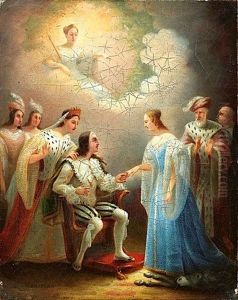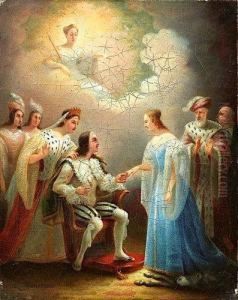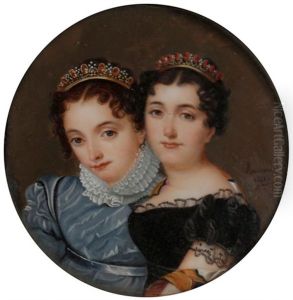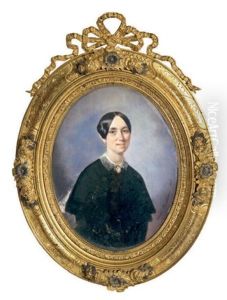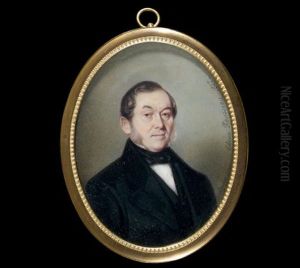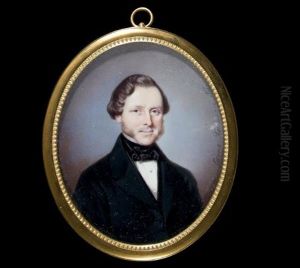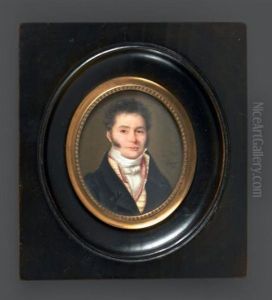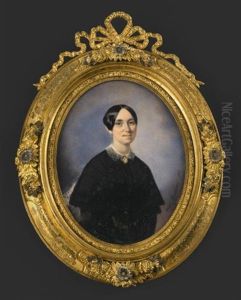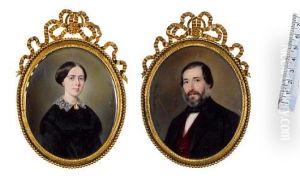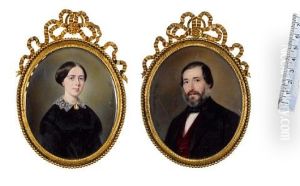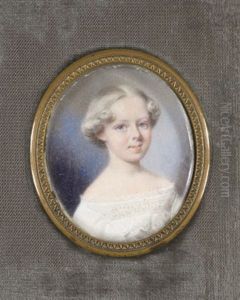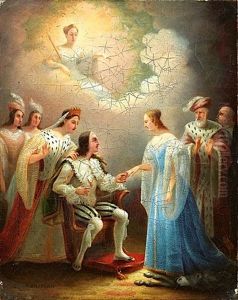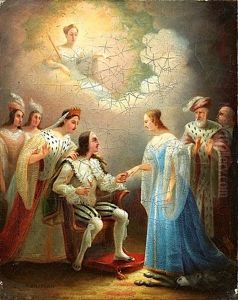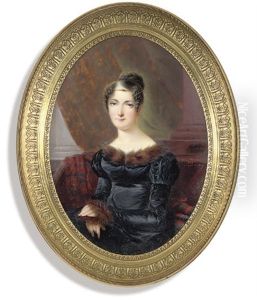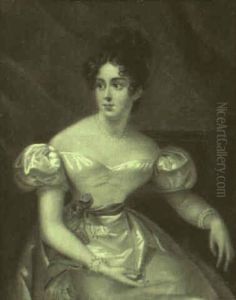Edme Rousseau Paintings
Edme Rousseau, a French sculptor born in 1815 and who passed away in 1895, played a significant role in the 19th-century French art scene. His life and career were emblematic of an era in French art that was deeply influenced by the Romantic movement, yet also paved the way for the emerging impressions of modernity that would define the turn of the century. Rousseau's work is less widely recognized today compared to some of his contemporaries, but his contributions to sculpture during his time were notable for their technical skill and emotional depth.
Rousseau received his artistic training at the École des Beaux-Arts in Paris, which was the premier art school in France and a crucible for the country's most talented artists. Under the tutelage of prominent sculptors of the time, he honed his craft, focusing on classical themes and forms, but also beginning to experiment with expressions of emotion and movement that reflected the Romantic sensibilities of his era.
Throughout his career, Rousseau participated in numerous exhibitions, including the prestigious Paris Salon, where he gained recognition for his work. His sculptures often depicted figures from mythology and history, imbued with a sense of drama and vitality that captured the viewer's imagination. Rousseau's ability to convey the inner life of his subjects, combined with his mastery of form and detail, earned him a place among the respected sculptors of his day.
Despite his achievements, Rousseau's work did not achieve the lasting fame of some of his peers. The latter part of the 19th century was a time of rapid change in the arts, with new movements such as Impressionism and later, Modernism, shifting the focus of the art world. As tastes changed, Rousseau's more classical approach to sculpture became less fashionable, leading to a decline in his prominence towards the end of his career.
Nevertheless, Edme Rousseau's contributions to French sculpture provide an important insight into the transitional period of the 19th century, bridging the gap between the neoclassical and modernist tendencies. His work, characterized by its emotional expression and technical precision, remains a testament to the rich artistic heritage of his time.
